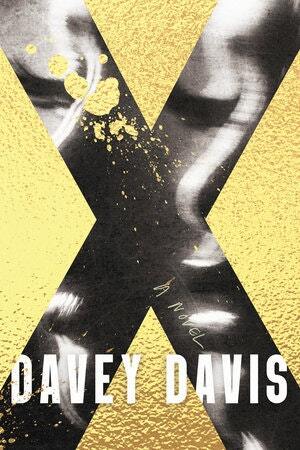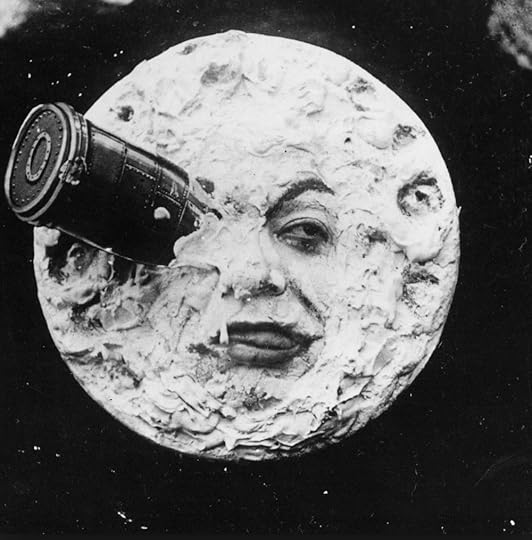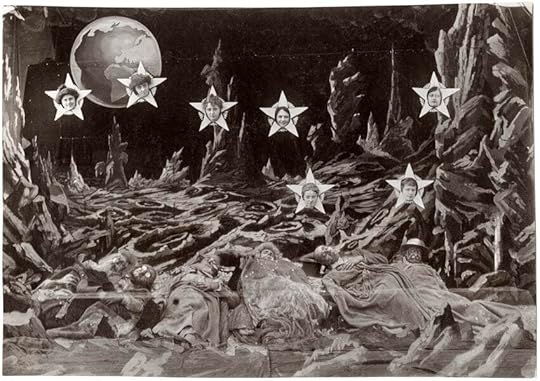Davey Davis's Blog, page 19
July 28, 2022
GOOD ADVICE/BAD GAY #15: on bad vibes

GOOD ADVICE/BAD GAY is a monthly advice series from an anonymous gay therapist1 who’s not afraid to hurt your feelings with the truth.
Submit your requests for advice to badgayadvice@gmail.com. All submissions get a free 3-month subscription and all subscription funds benefit rotating mutual aid projects, so please share and tell your friends!
Dear Bad Gay,
I live in a big queer house with four friends. It's the kind of space where intimacy is encouraged and open communication is lauded, with queer-platonic vibes aplenty.
Recently, me and one of my housemates rekindled a romance that ended between us four years ago, only this time we're totally in love. We're polyamorous, so are dating others at the same time, but they've become my primary partner, and we told our other housemates about it as soon as we knew it was serious. They've all been fine with it except for one: our best friend, with whom we've always had a playful, sibling-y dynamic.
July 26, 2022
David Davis 39, part 2

Read Part 1 here.
I believe in luck, unfortunately. The kind of person to toss salt, knock wood, converse with a dead god in the bathroom mirror, I’m an unwilling subscriber to a pastiche of cosmic checks and balances in which thought and action hold equal power, ends justify means, and correlation = causation. My world filters through a sieve of Christian-inflected superstition, and I’ve spent a lifetime kneeling over the remains, sifting for fault. There is always fault. It’s a stressful, but uncomplicated, way to live.
Lately, when people joke about doom and apocalypse, as they seem be doing more and more often, my bad luck antennae shiver. Though it’s tempting to indulge in this kind of humor—I’m guilty of it myself—to me, it reeks of bad luck. In assuming knowledge of our ultimate end, these jokers display hubris, a thing which by definition cannot go unpunished. With every flip remark about hell on earth, the superstitious among us must wonder if that hell is only being hastened. Maybe it’s the gay plague remix that’s happening as we speak, but the connection between vibes and consequences has never felt stronger.
I guess the jokes scare me. We mustn’t be glib about the crisis, I think, so very virtuously. We must resist the certainty that we’re being led to the slaughter. As if virtue has anything to do with suffering.

In part 1 of this series on gender contagion, I used J.G. Ballard’s Crash to explore the social production of pleasure. In Ballard’s novel, disabling car accidents spawn a cult of perverts who find both purpose and erotic release in physical suffering and high-stakes sexual risk. Looked at one way, Crash, and the 1996 Cronenberg film that’s based on it, offers one non-essentialist view of (sexual) perversion. In the worlds of Crash, the fetish—viewed by the mainstream as an inherently unnatural desire that is acquired, like lice, from an incident or a corruptor—broadens, rather than shrinks, the field of pleasure.
It’s one thing to suggest that social contagion, broadly speaking, need not necessarily be a bad thing. It’s another to claim the same of actual pathogens. Sure, we can look at getting your egg cracked by another tran as value-neutral, but how can you do the same with a literal plague? Though the COVID super-dodgers are dwindling in number, falling ill is the thing we’re all striving to avoid, right?
I’m reminded of an academic paper that I read way back in grad school written by a white settler scholar embedded in a rural community of indigenous Australians. If an outsider spent enough time in this community, they would invariably contract one of its epidemic illnesses, which caused lesions (minor but scarring) on one’s body. While also symptomatic of post- and neocolonial austerity, including lack of access to adequate healthcare, these scars were also visual markers of a community, signaling that the person bearing them was a member, or something like it.
In the paper, the grad student reports that she stayed in her community of study for years, long enough to finally contract the illness herself. Beginning to exhibit lesions of her own, she was more closely, complexly bound to her subjects, understood by the academy as not unlike viruses themselves: living, but not in quite the same way as humans are.

But we’re talking about the social contagion of gender, aren’t we? Gender being what it is, most of us experience ours in different ways at different times. One of the pleasures of being trans, at least for me, is being able to participate in those changes, and to be fascinated by them as they happen. My straight counterpart takes them as they come, like table scraps even, rarely viewing them as anything but inevitable, if they think of them at all. In the straight mind, no one escapes themselves (which is one reason why the high femme, the bimbo, the sex worker, etc., make such able infiltrators). As a transsexual, the amount of work that you do just to make it all happen, and keep it happening while you’re still alive, can make it easy to forget that it’s something that happens to you, too.
As hormones have transformed my physiology, I feel more androgynous than I ever have. I am a woman and a man at the same time, I’ve recently begun to think, and this is actually true, on, like, a material level. In most contexts, my odds of being seen as one or the other are pretty split—and all of that depends on my beholder. When I was younger, this ambiguity made me feel vulnerable (and it certainly does make life riskier). Now that it’s an ambiguity of my choosing, it’s also sometimes fun, and exciting, and sexy, and comfortable. I am both, at least for now. And I think it’s neat that most people pick up on that, as well as interesting how many elect a lane and lean into it, regardless of what my papers, voice, or genitals go on to reveal.
A dykefag knows no single hormonal regimen, but the one I’m currently on has altered my material needs and investments. Expanded them, I should say. I had sex with queer cis men before medical transition, but this new body has made a certain kind of faggotry accessible (to me!) in a way it wasn’t before. With this accessibility comes new pleasures, new connections, new knowings. It also comes with new risks, one of which has been in the news for the past month or so as yet another example of a state-sponsored public health crisis. Even if I never catch one of the illnesses to which gay men have been condemned, I am, in a sense, caught.
But more on that next time.
Find me on Twitter. Cop my second novel, X, right here. It’s NPR’s book of the day today, so here’s your chance to revisit my interview with Death, Sex & Money’s Anna Sale.
Subscribe to support GOOD ADVICE/BAD GAY, DAVID’s advice series from an anonymous gay therapist who’s not afraid to hurt your feelings with the truth. (Sample an unlocked post for a taste of what you’re missing.) 100% of funds go to support a rotating selection of mutual aid and reparations projects.
Want advice? Email badgayadvice@gmail.com for a free 3-month subscription.
July 16, 2022
David Davis

If I seem to you like the kind of person who would happily cut someone out of my life for crossing a line, congratulations—you’ve got me dead to rights.
I’m aware that this is not necessarily a healthy quality. In my case, it can be reactionary or arbitrary. The camel’s-back-breaking offense can be unfairly weighted with petty variables like past resentments, hormonal imbalance, a bad cup of coffee. And it can arrive without warning, both for me and for the person who somehow ended up on the wrong side of my sandbox.
Don’t get me wrong. Being able to set boundaries for my own safety and happiness is a hard-earned skill that I cherish; I’ve not always been the kind of person that was willing to protect myself. But it would be dishonest to say that I don’t sometimes overcorrect, or that haven’t I’ve gone on to regret my overcorrections. There are people I know I will never talk to again, even though I recognize, in the comfort of hindsight, that they weren’t as dangerous or unforgivable as I felt they were when I kicked them off the emotional premises. There are people that have no idea why I stopped talking to them, and though I could—maybe even should—explain myself, I know I never will. That ship has sunk, is how I think of it. If you’re not in my life, I obviously didn’t need you, anyway. Not that I need anyone at all. The vast majority of the people that I have eliminated from my life were fucking around and finding out, as they say, but I can admit that avoidance is a lot easier than managing conflict, and that of the two, only one offers the potential for vulnerability and growth.
As a result of this penchant for taking out the trash, I’m one of those lucky gay people that has had very few heteros in their day-to-day life for many years. It’s not my intention to be categorical, but since I won’t tolerate disrespect from someone who’s not paying my rent1 …well, you know how straight people are.
It’s not just homophobia or transphobia. It’s (and of course I’m generalizing here, etc. etc. etc.) their general tolerance for authoritarianism; their willingness to disregard others’ discomfort, fear, or pain if it means smoothing over a social situation or bolstering their status; their inability to recognize survivor concepts like chosen family for what they are—worst-case scenarios, to which many of us were driven against our will. This reflects a compounding entitlement that pads their days and their years, their relationships with their natal families and other oppressive institutions, their opportunities and their limitations, their health and their lack thereof. If I am to understand that you will not defend me to your friend when she wonders if maybe I’m a disgusting unnatural freak; that you won’t bring me around your straight boyfriend because you’re afraid of what he will say to me—but not enough to do something about his behavior; that you aren’t willing to end a relationship with a fascist who cannot be convinced of life’s value, even if that fascist is a blood relative that you love very much, then you will not enjoy intimacy with me. If this means that as a result straight people, and straight-acting people, are by and large vanished from my life, well. It is what it is.
What I’m saying is, my general separation from straight people has more to do with cultural differences than individual fault. Which means that it’s possible for straight people to change. Some of them, maybe even many of them, having benefited from the alternation of hand-holding and boundaries of gays like me, will later enter into the orbits of other homos who find them to be well-mannered, even comradely. (I’m sure that something similar has happened with me and other people as I’ve gotten older and learned some of the contours of, for example, my racism.) This is solidarity, and it transcends identity and difference, thrives on them, in fact, and it is beautiful. May we all get there someday. May we all overcome ourselves.
But it also means that my tolerance for straight people has wasted away. Outside of my remote 9-5 job or going the doctor, I really don’t have to deal with them in any sustained way2. And so when there is a circumstance where I am forced to deal with one and as a result am harmed or disrespected, I’m shocked by my response. No matter how small the incident, I’m outraged. I lose sleep. I rave about it to whomever will listen. I stew. I grow a pungent new resentment like a blister, rice-papering it with so many layers of skin that it becomes a callous, pregnant with blood and spleen, indefatigable and yet tender. It’s a boil. It’s a lesion. It’s a carbuncle square on my ass. And I can’t lance it or ignore it or chew on it til it bursts. It’s just down there, infuriating me.
My parents divorced when I was young, and even at the best of times, their relationship was never good. Though my dad had many faults—some of them normal straight white guy things and some of them weird as shit—my mom always claimed that there was a core to his intolerability. “He’s prideful,” she would say. “His pride won’t let him budge an inch on anything.” The older I get, the more I understand why. What my mom saw as my dad’s fundamental inflexibility was, in his mind, a refusal to accept contempt. Of course, he didn’t reckon that his grasping for dignity was, ultimately, undignified. I guess they were both right.
Find me on Twitter. Cop my second novel, X, right here.
Subscribe to support GOOD ADVICE/BAD GAY, DAVID’s advice series from an anonymous gay therapist who’s not afraid to hurt your feelings with the truth. (Sample an unlocked post for a taste of what you’re missing.) 100% of funds go to support a rotating selection of mutual aid and reparations projects.
Want advice? Email badgayadvice@gmail.com for a free 3-month subscription.
1There are a few notable exceptions that it would be indiscreet to get into here.
2I think often, too, about the ways in which having figured out a life for myself without the support of my natal family is in itself a reflection of what we may call privilege of varying kinds.
July 7, 2022
David Davis
My host, an Italian bear an inch shorter than I, ushered me into the dim and bitter-smelling apartment. At my request, he guided me to the bathroom. Would you like a towel? he asked politely; I declined. The bathroom was normal except for the dozens of boxes of Colgate toothpaste that were stacked above the sink. I took a picture for Bambi.
When I joined Antonio in his bedroom, he appraised me, rubbing his hands together and smiling. You’re so gorgeous, he said. I liked him, too. Bald, bearded, muscled, tight-bellied, big-cocked, and uncut, as Europeans tend to be, with an It’s-a-me, Mario-style accent. I should have been in heaven.
But then he kept talking. Though I like verbal as a rule, I was disappointed to discover that Antonio’s fantasies were scat-centric—not my cup of tea. He really got off on the idea of shitting in my pussy, or of me shitting on his face, or of him shitting in my mouth, god bless him. You dirty bitch, Antonio said, gently squeezing my arms. He talked about me fucking a dog, too, though with his rapid, uncertain English, the narrative was hard to follow.
Sweating, unfocused, Antonio kept moving his body and changing the subject, introducing a new scenario or position every other minute while struggling to stay hard. Great, I thought. Drugs, and he didn’t even offer me any. But I didn’t leave. I enjoy this kind of person, the kind that is so distracted that one is essentially alone in their presence.
Maybe it wasn’t drugs. It was hot outside, but the sweat on Antonio’s skin smelled like fear. His chest hair curled, wet and pungent, under my fingers. I love your nipples, I attempted, having given up any pretense of keeping pace with him. They were just long enough to betray themselves, a little pointed, rising from his chest hair like tree stumps from black fog. Like his apartment, his body smelled sharp and bitter, with an undercurrent of saccharine, the accord of cheap fragrance, molded walls, dusty pillows, Gun Oil, and the clean but perspirant faggot who loved pussy, he told me, loved girls like me, had had all the girls or, sorry, boys like me, but why were they all so flaky, so afraid of Antonio?
I mean, I understand, he said. It’s hard to meet people on Grindr. But they so nervous. They say they come and then they don’t come. I wondered how many t boys had picked up on the scat thing before they actually came over.
I’m complaining, but I liked Antonio, liked listening to his stories. He seemed unable to decide if he wanted to fuck or unburden himself, so we awkwardly cycled between both. He had been living in New York for 25 years, he told me. Before the pandemic, he worked in hotels—Trump hotels, actually, which he said like he was making a confession—but after lockdown, he began escorting so he wouldn’t have to go into an office every day. He hated it. Clients were flaky yet constantly calling, trying to get him to go all the way Downtown, and his friends with straight jobs judged him, not that they could ever hang out, anyway, with the hours Antonio kept.
The solution seemed obvious to me. Why don’t you just make friends with other hookers? I asked.
Eh, he said, grimacing. They’re catty! He threw his wrist in a way that reminded me of an uncle I don’t talk to anymore.
I thought about the toothpaste boxes. Bambi would have a good laugh about that, I was sure. If only they could see me now, rolling my eyes while my date rambled about Great Danes and his rent-controlled apartment. For all his talk about loving t boys, Antonio didn’t know what to do with pussy. Typical. The only way he could stay hard was by avoiding eye contact with me and talking about shit, his own hand on his cock. We fucked for a little bit—Bambi would want to know what else Antonio was hoarding, I thought, would demand that I do a tour of the apartment to take more photos of weird stuff—and then he asked to shit in my mouth.
No, I said, laughing. His cock was thick at the base, but tapered considerably at the top.
I understand, Antonio said. He was serious, almost apologetic. I never done any of the stuff I talk about. Not even taste my own cum.
I felt no need to hide my laughter from him; I don’t think he noticed. He was so lost in himself, so high or whatever. It’s strange, but thinking about it now turns me on, even though I was anything but during our date, and I knew for sure I’d never be coming back.
When it was time to leave, I wished he hadn’t escorted me down the long, shadowy entryway. With its scent of ancient summers and hard sweat, it had the air of a haunted mineshaft, and Bambi would have liked to see the creepy, homemade-seeming oil paintings.
At the door, Antonio seized my waist and kissed me. I stepped into the hall and put on my sunglasses.
Oh, you look so good. So very good, he said, laughing as he closed the door.
Find me on Twitter. Cop my second novel, X, right here.
Subscribe to support GOOD ADVICE/BAD GAY, DAVID’s advice series from an anonymous gay therapist who’s not afraid to hurt your feelings with the truth. (Sample an unlocked post for a taste of what you’re missing.) 100% of funds go to support a rotating selection of mutual aid and reparations projects.
Want advice? Email badgayadvice@gmail.com for a free 3-month subscription.
July 1, 2022
Let a thousand fisting daisychains bloom

Earlier this year, I began working with Natalie Adler of Lux Mag on an essay about the commodification of kink. With the news being what it is—the hits stop coming and they don’t stop coming—that essay swiftly became another, about the intracommunity discourses of kink at Pride. Though a condensed version was sent to Lux subscribers last week, the pub graciously allowed me to share the long one here with you. Gay Wrath Month, indeed.
Like springtime in the Anthropocene, the much-maligned “kink at Pride” (kaP) discourse comes earlier every year, and those of us in the Twitter trenches can’t seem to shake the debate that’s as popular as it is detested. With the demise of Roe v Wade and the rollback on gender, sexual, and racial freedoms it will likely bring; the boom in “no promo homo” legislation restricting the rights of trans people, especially our youth; and spiking trans-antagonism and homophobia, some might see kaP as hair-splitting while the house is on fire.
But rather than distract, kaP marks the spot where moral panics around deviant sex meet America’s queer and trans culture wars. Those queer people who fear public displays of kinky sex, at Pride or anywhere else, often invoke same victim as the fascists do: the straight, cis, white, middle-class, often-feminized abstraction known as the Child. As more privacy-based rights appear on the Supreme Court’s chopping block, including contraception and marriage equality, the anti-kaP crowd would do well to remember that their respectability politics dovetail with far-right agendas to restrict queer rights and eliminate queer lives—and that what constitutes kink, deviant, and even sex are moving targets for our enemies to exploit.
Of course, kaP is much older than Twitter. Since the early days of gay liberation, liberal homos have been eager to collaborate with the state in order to neutralize the danger that radical sexual and erotic freedom—which is demonized by the right as deviance—pose to homosexual assimilation. In his 1982 essay, “Public Sex,” Patrick Califia charts the post-Stonewall history of the white, cis, middle-class gays, and their apologists, who demand that the freaks desist from public sex and cooperate with the cops. “The threat that children might see men having sex with each other is far and away the most popular excuse for surveillance and arrests,” Califia writes. “And it’s possible that a child or a teenager who saw such an act could be frightened, disgusted, or upset. However, that’s not because sex is inherently toxic or traumatic to children. It’s because young people are denied information about sexuality and are kept especially ignorant on the subject of gay and lesbian sex.”1
Of course, as Califia goes on to point out, the Child and children represent two different priorities. If children mattered as much as the Child does, the politicians that call queer people “groomers” wouldn’t be gunning for the forced the genital examinations of child athletes (much less the elimination of subsidized school lunches, or public education entirely). kaP must be understood as the backwash of state efforts to regulate and discipline non-normative genders, a process in which the Child has a long history. The idea that witnessing a certain kind of human sexuality is inherently traumatizing in a way that lack of healthcare, incarceration, or white supremacy is not has recycled and reinforced rhetoric used to criminalize queer people in service of repressive moral panics since at least the emergence of the homosexual as an identity.
In the face of increasing state, media, and stochastic violence against queer and trans people, “respectability” will seem like a safe harbor to those who don’t know, or don’t want to know, that queer, trans, and deviant cannot be separated from each other.

In his introduction to the 2001 reissue of Leatherfolk, journalist and leatherman Mark Thompson writes: “Cultural conservatives, increasingly inhibited from wholesale queer bashing, narrow their target by distinguishing between ‘good’ and ‘bad’ gays, the former being the nice same-sex couple next door, the latter demonized as the perverts in leather on the streets.” If we’re looking to spot the difference between the “good” gays and the perverts ruining Pride, it might help to define our terms.
Expanding on the now-outré S/M or S&M, BDSM stands for bondage and discipline, Dominance and submission, and sadism, masochism, and sadomasochism2. Often used interchangeably with S/M, leather is the legacy of queer sadomasochist subcultures born of American post-WWII veteran and biker clubs bound by a desire to “erogenize the forbidden,” as Thompson puts it. Kink generally refers to non-normative sex; it also can be an umbrella term, one often problematically encompassing leather and BDSM, as well as fetish. All of these terms signify deviant sexual behavior, though deviance itself demarcates a moral and/or criminal element of censure, punishment, and carcerality. Crucially, while today we see “kink” and “BDSM” used to describe a kind of “community,” only leather is a sexual subculture as well as a diffuse but coherent political movement for sexual freedom.
So—let’s break down a few kinky activities and see which are actually deviant, and which are just, you know, gay. Public sex, for example, terrifies the anti-kaP crowd. Nothing LGBTQI about that, right? Except for the queer people who can’t safely be at home or be intimate at home; or the reality for Americans experiencing homelessness, 20-40% of whom are LGBTQI; or outdoor-based sex workers, a trade over-represented by marginal people, including queer and trans people3. Deviance doesn’t account for the material circumstances that make private space difficult or even impossible to attain for those without the money, paperwork, or racial capital. Even with mass criminalization, the housing and debt crises, and rampant inflation rendering “privacy” a luxury good, it’s worth remembering that public sex is a part of queer history for reasons beyond the material and practical: some of us simply want to fuck somewhere other than where we sleep without that being used as a pretext for our criminalization4. As Dorothy Allison once wrote, “There is this notion that sex is separate from life.”
What about gender play, with which we as trans people, famously the “T” in LGBTQI, are associated—is that allowed at Pride? Is a cross-dresser daring to appear in the light of day forcing someone else to witness their dangerous kink, and if so, how are we to distinguish them from someone like me, who has made cross-dressing a lifestyle (committed to the bit, as they say)? As the Madison Cawthorn scandal or Proud Boy attacks on drag queens daring to interact with children remind us, gender play is broadly recognized as a fetish, a legacy of pre-Stonewall cross-dressing laws and an echo of newer, intentionally vague legislation, like New York’s “walking while trans” law—used to target trans women, sex workers, undocumented people, and people of color—which was on the books until just last year.
While it’s long been debated whether leatherfolk were actually in attendance at Stonewall, deviant sexuality has always been found at Pride events5. (Incidentally, so have children and youth6, and not just the ones who fought police in the insurrection the parade commemorates.) In 1983, Gayle Rubin wrote that a coherent leather political identity trailed the gay liberation movement by about a decade, when leather organizations began demanding a place at Pride events7. As documented in Coming to Power: Writing and Graphics on Lesbian S/M, the San Francisco lesbian-feminist leather organization Samois struggled to be included at the 1978 Gay and Lesbian Freedom Day Parade (a proto-Pride event). Though they got what they wanted, they were heckled and harassed by the crowd.
Over the past five decades, leatherfolk have made a place for themselves in Pride celebrations, and have created their own, too8. But a bug (or perhaps a feature) of a vague and capacious definition of deviant is that one doesn’t have to be a leatherperson, or even kinky, to be ostracized from LGBTQI functions and organizations—and more crucially, resources earmarked for the same—while being identified as such.
The consensual activities that can supposedly do permanent damage to children, should they accidentally witness them, remain inextricable from the human beings that gay liberation is supposed to be for. If the races, genders, classes, sizes, abilities, and trades that deviate from the white, straight, cis, middle-class, thin, abled, whorephobic norm are among the identity categories viewed as inherently and dangerously sexual, then only the norm can be safe (and when these deviant categories overlap, their vulnerability is only compounded). To say that the deviant subjects produced by white supremacist patriarchy are welcome at Pride so long as they don’t use it to indulge in deviance is to contradict oneself. They’re already deviant because they exist.

Moral panic surrounding the deviance of queer genders is at least as old as the 19th-century Western construct of the (male) homosexual, a legal, medical, and sexological category understood by Europeans as having an intrinsic connection to moral depravity, pathology, or primitivism, depending on where and how in the colonial context he was found9. In the intervening years, moral panics surrounding homosexuality and gender variance (though the distinction between the two is rarely clear) in Europe and its colonies have worked to advance white supremacy, colonialism, and the capitalist expansion of state power. Lately, the homosexual moral panic has been expanded to explicitly include a new emergent sexual identity: trans people10.
Manifested in bathroom bills and legislation equating access to trans healthcare with child abuse, trans people and our accomplices are being targeted as “groomers” of children both in preparation for sexual assault as well as contamination of “cis” children with transsexuality. This not only puts trans adults in danger, but trans children, too; they are condemned as both victims and monsters by everyone from out-and-proud transphobes to The New York Times’ more subtle liberal stooges. As scholars Cassius Adair and Aren Aizura wrote for Transgender Studies Quarterly earlier this year, “Since (some) same-sex sexuality has successfully been privatized and normativized, trans youth now bear the burden of a public, visible social force of ‘sex’ that is imagined to violate the sanctified space of the middle-class nuclear family…If same-sex desire has been domesticated, transness must now represent 'deviant' sex.”
A 21st-century variation on the trusty narrative that we, as queer and trans people, pose moral, emotional, and physical threats to others, kaP both summons and reinforces state violence against anyone identified as deviant. As a popular discourse, it’s framed as a slippery slope into degeneracy: if X is permitted, then Y is inevitable. But it’s no less about the past than the future. Hinging queer and trans civil rights on mutable definitions of privacy, violence, and morality is not new, and the tactical shortcomings of embracing this compromise have been demonstrated again and again (how long before America’s contingent of Buttigieg clones must kiss their precious marriage goodbye?). In tracing its history, we see that kaP discourse is not an aberration, but rather representative of a highly adaptable method of violently imposing norms on queer and trans people by way of the straight superstructure.
Queer opposition to kaP and legislative attacks on trans people—whether directly or by neglect—share analogous logics. kaP is antecedent to and concomitant with legislation meant to “protect” the Child from queer and trans people of all ages. Among these is “Don’t Say Gay”—signed into law by Florida governor Rob DeSantis in late March—which, while outrageous, isn’t groundbreaking in its cruelty. Expanding on the homophobia of its legislative forebears with explicit transphobia, it prevents public school teachers from talking about sexual orientation or gender identity and requires parents to be the first to be notified of any health or support services offered to their kids in school, effectively forcing teachers to out LGBTQI students to their legal guardians.
Supporters of DSG have called it anti-grooming legislation, conflating the acknowledgement of human variety in gender and sexuality with manipulative behaviors used to sexually exploit and abuse children. In a crowded field, it’s among the most prominent current example of right-wing propaganda claiming that the existence of queer and trans people is the equivalent of an unforgivable sexual violence.
DSG joins a fresh paroxysm of anti-gay, anti-trans, and anti-critical race theory legislation. In February, PenAmerica reported that since January 2021, 156 educational gag order bills on speech, behavior, and educational materials have been introduced or prefiled in 39 states. Many use the language of obscenity to discuss these behaviors, while at least one of them, Oklahoma Senate Bill 1142, goes further to reference deviant sex explicitly (italics mine): “No public school district, public charter school, or public school library shall maintain in its inventory or promote books that make as their primary subject the study of sex, sexual preferences, sexual activity, sexual perversion, sex-based classifications, sexual identity, or gender identity or books that are of a sexual nature…” As scholar Ariane Cruz writes, perversion is “a technology of power deployed in the discursive production of sexuality”.11
It’s impossible to talk about the legal status of deviant sex, at Pride or elsewhere, without also talking about the many groups of people marginalized by the law as sexual deviants: not just queer and trans and kinky people, but people of color—particularly black and indigenous people—people experiencing houselessness, disabled people and people with mental illness, sex workers, people who use illegal drugs, and incarcerated and formerly incarcerated people. Deviance is a conceptual place to throw people away, and as the recent escalation of anti-trans sentiment demonstrates, kaP is an outgrowth of a rhetoric with proven results. Its logic hasn’t just infiltrated America’s legal, educational, medical, and military systems—it organizes them12.

What would a Pride parade without kink look like? No puppy masks or leather harnesses, no nudity, and no public sex, which, depending on who’s complaining, could be anything from second base to fisting daisychains—but we’ll leave the details to the lawyers. Of course, cops must be there to ensure no one pollutes our celebration of sexuality with sexuality, their rainbow squad cars bravely defending the sanctity of the Chase floats and Target-branded unicorn swag surrounded by a docile crowd of blood-related, child-laden white families who don’t feel endangered by police. For me, “Is kink allowed at Pride?” smuggles inside another question: “Do we want policing at Pride?”
To protect Pride, we have to protect kink at Pride—kink everywhere, in fact—on its own terms. The alternative is our elimination from public life.
Find me on Twitter. Cop my second novel, X, right here.
1From Public Sex: The Culture of Radical Sex (1994)
2Citing its entry in Richard von Krafft-Ebing’s Psychopathia Sexualis, which concluded that homosexuality and bisexuality were mental illnesses, Thompson notes, “It is no coincidence that the notion of sadomasochism arose in an identical time and manner as the concept of homosexuality.”
3In a 2008 American study, those who lost a job due to anti-transgender bias were almost three times as likely to engage in the sex trade (19.9% vs. 7.7%).
4Because straight people do it, too. They’re just less likely to be punished.
5Kyle Kingsbury’s “A History of Leather At Pride: 1965–1995” has been a very helpful resource in researching this piece.
6“Christopher Street Liberation Day March, New York, 1976”
7“SM Politics, SM Communities in the United States,” The Ashgate Research Companion to Lesbian and Gay Activism
8They’ve also reproduced the same structures of oppression that the gay liberation movement has. As scholar Zoé Samudzi writes in “The Chromatics of Play,” “The sexual imaginary within which BDSM is broadly situated is a chromophobic one: it does not organically acknowledge the possibility of the pleasure or interiorities of Black people beyond their instrumentalization in and into white scripts.”
9For anyone looking to dig deeper in to this fascinating subject, I recommend the work of contemporary queer and trans scholars like Huw Lemmey and Ben Miller (Bad Gay: A Homosexual History), Jules Gill-Peterson (Histories of the Transgender Child), C. Riley Snorton (Black on Both Sides: A Racial History of Trans Identity), and Leah Tigers (“On the Clinics and Bars of Weimar Berlin”).
10In her recent appearance on the Death Panel podcast, Gill-Peterson pointed out that while homosexuality was removed from the DSM in 1973, transsexuality was added in the following edition.
11The Color of Kink: Black Women, BDSM, and Pornography
12In her analysis of Foucault’s turn toward S&M in Sensational Flesh: Race, Power, and Masochism, Amber Jamilla Musser writes: “S&M reorganizes the body to emphasize pleasure rather than identity or discipline; it offers tangible corporeal freedom.”
June 23, 2022
Tonight: a reading for Book Passage

A quick reminder that the Bay Area’s liveliest bookstore, Book Passage, is hosting a ~very special Pride conversation~ between me and the inimitable Gretchen Felker-Martin, filthcore queen and author of 2022’s horror standout, Manhunt. It’s free, it’s virtual, and it starts at 5:30pm PST/8:30pm EST.
As an obsessive Gretchen stan (I mean, who isn’t?), I couldn’t be more excited to talk about my book with this brilliant novelist, critic, and thinker. See you there, biscuits.
Find me on Twitter. Preorder my second novel, X (Catapult, 2022), out June 28. I have events and everything!
Book Passage Pride Reading with Gretchen Felker-Martin: Thursday, June 23, virtual.
The Strand Book Launch with Torrey Peters: Tuesday, June 28, in person.
Subscribe to support GOOD ADVICE/BAD GAY, an advice series from an anonymous gay therapist who’s not afraid to hurt your feelings with the truth. (Sample an unlocked post for a taste of what you’re missing.) 100% of funds go to support a rotating selection of mutual aid and reparations projects.
Want advice? Email badgayadvice@gmail.com for a free 3-month subscription.
June 20, 2022
David Davis 39

J.G. Ballard’s seminal novel—on which the 1996 David Cronenberg joint1 is based—is about people who get off on car crashes.
Protagonist James Ballard (who shares a name with the author) is inducted into this deathstyle by Dr. Robert Vaughan, a “nightmare angel of the expressways” driven by the ultimate fantasy of a head-on collision with Elizabeth Taylor2. Reckless as tornado hunters, Vaughan and his acolytes roam the highways around what’s now Heathrow Airport in search of accidents and their survivors, all brutalized, disabled, and, if they’re anything like them, newly ravenous for exciting new traumas. As James discovers, these fire-and-metal baptisms—catalytic converters, if you will—produce new relationships to his own and others’ bodies, as well as to the “trap[s] of gas and metal knives” where they fuck.
While nominally straight, James begins having sex with Vaughan, using these erotic experiences to fuel other ones. In one scene, he describes an encounter with Vaughan to arouse his wife, Catherine.
My description of Vaughan continued more for Catherine’s benefit than for my own. She pressed her head deep into the pillow, right hand in a fierce dance as she forced my fingers to manipulate her nipple. Although stirred by the idea of intercourse with Vaughan, it seemed to me that I was describing a sex act involving someone other than myself. Vaughan excited some latent homosexual impulse only within the cabin of his car or driving along the highway. His attraction lay not so much in a complex of familiar anatomical triggers - a curve of exposed breast, the soft cushion of a buttock, the hair-lined arch of a damp perineum - but in the stylization of posture achieved between Vaughan and the car. Detached from his automobile, particularly in his own emblem-filled highway cruiser, Vaughan ceased to hold any interest.
James’s queerness is specific but not incidental. Prior to the crash that transformed his sex drive, his desire for Catherine, and hers for him, was cold as Plexiglass. With their shared fetish, James, Vaughan, Catherine, and their lovers create space for new desires, not to mention excretions, sensations, and crises.
Viewed in the normative way, the fetish is limiting; the fetishist can’t have normal sexuality and instead is doomed to chase the deviant object of desire (though as we say here on DAVID, sometimes a foot is just a foot). But as an alternative to the equally limiting—and, arguably, dangerous, depending on who you are—heterosexuality from which Ballard’s characters have been wrested, it’s broadening the field of pleasure, not shrinking it. While rehabilitating from the injuries of his own crash, James discovers in exam rooms and x-ray machines that while cars claim his heart and cock, there’s endless pleasure to be found beyond the heterosexed human body. Among alien “[mazes] of electronic machinery” are “languages of invisible eroticisms” and “undiscovered sexual acts” for the roving eye of subjectivity to witness.

I’ve been thinking a lot about social contagion, and, surprising no one, I’ve found myself returning to the pervert maestros of body horror to think my way through it. Right now, some trans people are critiquing our knee-jerk response to the idea that being trans is contagious (derogatory. Paging Susan Sontag!). On this subject, I’m in agreement with P.E. Moskowitz, who tweeted recently that “ofc transness is socially spread!!!! there’s no set number of people who are trans!!! we must be comfortable with the idea that many more people WANT to be trans. and that’s good!!! stop with ur born this way bullshit!!!”
I enjoy thinking about the trans people who made me want to be trans. Some of them I wanted to look and be like, like the first transmasculine person I ever spoke to. Some of them, like Morgan M Page, were trans in a different way but had created transsexual lifestyles and communities that I desperately wanted for myself, that were familial, political, glamorous, intellectual, sexy, defiant, and brave. Whether encountered interpersonally or otherwise, these trans people are why I am the way I am—which is to say, alive.
They’re not the whole picture. Pretending that my social contagion of transness begins and ends with trans people would require pretending that they’re the limits of my social existence. Yet cis people have comprised the vast majority of my human relationships, especially the formative ones. Within the confines of cisnormativity, this has been traumatizing in ways I will never be able to fully express. In thinking about my cis influences, the word salvage comes up frequently—true to queer form, I’ve taken a great deal from straight culture3 that wasn’t meant for me.
But what about the cis people who saw my transness, who nurtured, supported, desired, fetishized, or welcomed it? If being trans is contagious, it’s not impossible that a cis person was my Patient Zero.
Find me on Twitter. Preorder my second novel, X (Catapult, 2022), out June 28. I have events and everything!
Book Passage Pride Reading with Gretchen Felker-Martin: Thursday, June 23, virtual.
The Strand Book Launch with Torrey Peters: Tuesday, June 28, in person.
Subscribe to support GOOD ADVICE/BAD GAY, an advice series from an anonymous gay therapist who’s not afraid to hurt your feelings with the truth. (Sample an unlocked post for a taste of what you’re missing.) 100% of funds go to support a rotating selection of mutual aid and reparations projects.
Want advice? Email badgayadvice@gmail.com for a free 3-month subscription.
1I wrote about the newest Croney joint here, if you missed it.
2Lol I’ve written about her here, here, and here.
3Reminder that I occasionally, I use cis and straight interchangeably. This is never done by mistake.
June 14, 2022
David Davis 38, part 3

“That's one small step for man, one giant leap for mankind.” Mankind (or humankind, as we’d probably say now) has been to the moon. You, the human reading this, almost certainly have not.
In thinking about how we talk about ourselves as a species, I’m forced to reckon with how little I, personally, have to do with our global supremacy1. Whether God granted us “dominion over…every living thing that moves on the earth,” or we’ve just leveraged evolutionary advantage (plus a little luck), humans have been apt, resourceful, intelligent enough to develop calculus, circumnavigation, the combustion engine, plastic, computers, Post-it notes, instant coffee—the full spectrum of technologies necessary to send a guy to the moon and bring him back again all in one piece. Humans did that. I am a human. I am somehow involved, and yet, of course, not in the least. I’ve never even changed a car tire.
A movie cliche you’ve surely encountered is the character who looks up at the Milky Way and says, in awe, something along the lines of, “It makes me feel so small, like an ant.” Ants haven’t built any rockets, but they do accomplish feats of engineering that, like the feats of humans, may be more accurately attributed to the group than to the individual. Scientists use the term superorganism2 to describe the ant colony because individual ants aren’t able to survive by themselves for extended periods; the ant as an individual is contested ground, at best.
Understood as a component of the superorganism, what does a single ant know or do? It knows to collect food and it plays its role within the colony because the colony wants it (understanding want as a not-necessarily-conscious function, here). Separated from the colony, not only is the ant as good as dead but it has no agency, purpose, or knowing.

For all that I don’t believe in it, intelligence is often on my mind. But maybe believe isn’t the right word. I mean, I believe in intelligence, just not in the way that it’s been naturalized. Like “biological sex,” race, or disability, intelligence is a relational, culturally mediated, and context-specific quality wielded as a tool to organize and hoard power and discipline/produce subjectivity. I believe that the smart way to approach intelligence is with skepticism and with the recognition that it should never be taken for granted.
Here, when and where I am, we are trained from birth to understand intelligence as inborn and immutable but also a commodity that’s always for sale; imbuing not just value but morality; directly proportionate to one’s capacity for productivity under capitalism; and existing outside of so-called “identity politics” while also somehow magically aligning with money, power, and whiteness, plus other normalized ways of embodiment3. To me, it makes more sense to think of what intelligence does rather than what it is. In this way, we can start teasing it apart from our essentialist preconceptions, while also reclaiming those aspects of it that are useful, informative, and even, possibly, liberatory.
What good does it do to decide that one person is intelligent and another isn’t? What is gained and what is lost? I don’t mean that we should pretend there are no differences between our minds, but rather that it’s possible resist the poisonous idea that this diversity must exist within a moral hierarchy, or that it’s both utterly vast and yet reducible to a few Scantron tests taken under surveillance by a for-profit company, like your own mind isn’t yours. Can we discuss ability, talent, aptitude, skill, genius, and power, the kinds that we’re hard-wired for and the kinds that can be stunted or developed, as our life circumstances dictate, without dismissing human value? I think we can, with some practice and intentionality.
If you’re a regular reader, you know that my sister, C., has intellectual and developmental disabilities that I don’t. She is not unaccustomed to being dismissed and, frankly, oppressed, for these reasons, even if she doesn’t always understand or recognize when this is happening. As she and I build an adult relationship that goes beyond caretaker and burden—something that we must do together, but that requires a ceding of control and ego on my part—I have begun telling her that she is smart (as well as funny, cool, kind, caring, and hard-working, all of which she is).
At first, this felt unnatural, and I think, though I don’t know for sure, that it surprised her. It’s not something she’s ever regularly been told. But it’s true. Why didn’t I ever tell her that she was smart when she gained a skill, learned a word, told a funny joke, made an insightful observation, or otherwise demonstrated growth (something that all people of all I.Q.s4 can do)? Because it never occurred to me to do so. And because when it finally did occur to me, the notion felt almost taboo, as if I was giving away a finite resource meant to be hoarded for others more “deserving” than she, including myself.
Find me on Twitter. Preorder my second novel, X (Catapult, 2022), out June 28. I have events and everything!
Book Passage Pride Reading: Thursday, June 23, virtual. I’ll soon be announcing my extremely exciting conversation partner—don’t miss us!
The Strand Book Launch with Torrey Peters: Tuesday, June 28, in person.
Subscribe to support GOOD ADVICE/BAD GAY, an advice series from an anonymous gay therapist who’s not afraid to hurt your feelings with the truth. (Sample an unlocked post for a taste of what you’re missing.) 100% of funds go to support a rotating selection of mutual aid and reparations projects.
Want advice? Email badgayadvice@gmail.com for a free 3-month subscription.
1Which of us maintains that supremacy and under what terms is well-trod ground here, I hope. Suffice it to say that, in speaking about humanity as a group, I have not forgotten that our power is distributed along the lines of white supremacy and anti-blackness, neo/colonialism, patriarchy, etc.
2Some scientists have suggested that humans (rather than humanity) qualify as superorganisms because of our microbiomes.
3Eugenics, baby.
4Fake.
June 3, 2022
David Davis

When David Cronenberg took the stage at the Walter Reade Theater last night, he was introduced—to a smattering of dry laughter—as the Prophet of the New Flesh.
“Maybe the Prophet of the Slowly-Aging Flesh is more like it,” the great director humbly rejoined, his shock of white hair standing at attention.
Since Torrey had plans, she generously donated her tickets to the New York premiere of Cronenberg’s newest film, Crimes of the Future, to me and Jade. Starring Viggo Mortensen, Léa Seydoux, and Kristen Stewart, Crimes is a revival of OG body horror Croney, a return to his old stomping grounds of rent flesh and razor’s edging after a couple decades of less viscerally grotesque, if not less brutal, fare1.
Crimes drops us in a near-future—more ravaged by climate crisis than now—where famous performance artists Saul Tenser and Caprice (Mortensen and Seydoux) titillate audiences with waking surgery in darkened drawing rooms. As Saul and Caprice’s star rises, a body known as the National Organ Registry begins investigating the disease, known as Accelerated Evolution Syndrome, that causes the Saul to proliferate with new organs and novel hormones; if it wasn’t for Caprice’s surgical interventions, he would swiftly become something else other, or more, than human. And he’s not the only one.
Without getting too much into it—I may actually write something like a review, at some point—Crimes’s themes of public intimacy/sex, S/M, bureaucratic quagmire, and apocalypse merge into a distinctly transsexual valence that feels blissfully depoliticized, or at least politicized differently than what we’re used to. Maybe that’s what has drawn me to Cronenberg since I first saw Videodrome (1983): his work with the textures, torments, and sensations so often relegated or even confined to us, as trans people, without limiting himself to mere gender play. Jade has an, I think, very credible theory about the chaser gaze in Crimes, but neither of us think the director emits it himself2.
As livid, shocking, and strange as it is, and as clickable a tagline as Surgery is the new sex, Crimes is most preoccupied, I think, with the creative process—a fitting theme for a highly successful artist who is, frankly, nearing the end of his life. I might even suggest that Crimes is an attempt to interrogate the limits of body horror as a metaphor by the director with whom it’s mostly closely associated. Does Cronenberg denaturalize body horror with more of the same? If he is successful—and I’m not sure that he is, still chewing on it—it proves that, even now, decades since he started this beat, it remains, as Saul says, with sensual satisfaction, “juicy with meaning.”
Find me on Twitter. Preorder my second novel, X (Catapult, 2022), out June 28. Join me on Thursday, June 23, at a virtual event with Book Passage. I’ll soon be announcing my extremely exciting conversation partner—don’t miss us!
Subscribe to support GOOD ADVICE/BAD GAY, an advice series from an anonymous gay therapist who’s not afraid to hurt your feelings with the truth. (Sample an unlocked post for a taste of what you’re missing.) 100% of funds go to support a rotating selection of mutual aid and reparations projects.
Want advice? Email badgayadvice@gmail.com for a free 3-month subscription.
1For more context, I recommend my friend Chris Randle’s Letterboxd review.
2If anyone can direct me to reviews that take into account disability, please do! A rich text, indeed!
May 31, 2022
GOOD ADVICE/BAD GAY #14: on Davey Davis

GOOD ADVICE/BAD GAY is an advice series from an anonymous gay therapist1 who’s not afraid to hurt your feelings with the truth.
This month, instead of doling out their sage advice, my old friend Bad Gay fixed that enigmatic gaze on ~*me*~, in an interview about my forthcoming novel, X, which will be in stores on June 28 (you can preorder here, if you want).
This interview is quite long, but the juicy stuff is behind the paywall. Subscribe to read about X’s cinematic influences, true crime, incest porn, surveillance, New York, and why I call this book my love letter to sadists. Don’t miss it.
BG: As someone who’s watched you work over the years, I can say that you’re very devoted and structured. Not one lazy brunch or hangover has deterred you from putting your little backpack on and heading home and churning out pages. I’ve always been curious about whether this feels like a glorious, languid, and satisfying process, or more like a What’s he building down there , Tom Waits-type scenario. Or is it a combination? Or is that a question only a non-writer would ask?
DD: Well, first of all, I think you’re a writer, so jot that down. But it’s funny, I was just talking about this with McKenzie Wark, another compulsive writer, about how when you go on hormones all of a sudden you wanna do stuff other than the thing you’re used to grinding away at. So true, bestie.
Post-hormones, writing has gotten a little less compulsive for me. But I also love doing it. It’s fun. And the more I do it, the more fun it gets. People talk about how much work it is, which is true. When you’re younger and less focused, it is harder, because you don’t feel like you have a purpose or a direction yet, or at least I didn’t. Once I figured that out, I didn’t want to do anything else. Writing is also how I think. I can’t think if I’m not doing that.
BG: I think it’s interesting, though, when you read writers on writing, the thing that comes up a lot is, How do you habitualize the writing? Often it’s presented as if 80% of the issue is getting your system down and doing your pages in the morning. As someone who’s been adjacent to other writers in my life, that’s something that I’ve never heard from you about your writing. Like you’ve never struggled with that part of it.
DD: That’s just because I’m kind of embarrassed to talk about it. Because it’s very personal.
BG: The process is?
DD: Yeah…I hate to be like, It’s my favorite thing and it’s so easy, because that’s not exactly true. There are a lot of hangovers where you’re writing through it and it feels like shit (well, fewer hangovers, these days). But what has actually helped me become a better writer was being less private about it. You talk to other writers, and learn things from them. Torrey Peters is one of those writers who seems to experiment, who will be like, I have a new thing I’m gonna do to get in my writing today. I think she approaches it like an athlete, which is a great model. Only by talking to other writers and sharing our processes have I been able to make my process work in the long-run.
BG: Do you write through and then edit? What’s your editing process?
DD: Editing is the fun and easy part. You have all the Content. Ugh, I hate that word, content. Getting the material and then working with it, that’s the fun part. That’s your little reward.
BG: Editing is the reward.
DD: Editing is the reward. Editing is an art and there’s a lot of pleasure in editing a book and sifting through it and kind of finding what it is that you’re looking for. I don’t want to say that the artistry of creating material is unconscious, but when you’re writing, that’s when you’re having a certain kind of conversation with yourself. In Alex Chee’s How To Write An Autobiographical Novel, and he he writes, “The story of your life, described, will not describe how to came to think about your life or yourself, nor describe any of what you learned. This is what fiction can do—I think it is even what fiction is for.” If I was like, This is Bad Gay’s life, and then related all the things that have happened to you, that’s not really gonna tell me what you got out of it or why you’ve made the choices that you’ve made. That’s kind of what a novel is for, or what it does, is Alex’s take. I kind of think that the writing process—just the writing, not the editing—is reaching out to an unconscious intelligence (without making the claim that the writing is unconscious, if that makes sense).
BG: I would say though, just to push back mildly, I don’t think that every author—and most especially not every author that’s getting published in 2022—is a built-in copy editor for themselves. I feel like you and I could list off six novels that could have used a heavy edit. And maybe the artistry would have emerged, but I think you’re talking about your process as having two parts in a way that I don’t think everybody does.
DD: I should add to that by saying that for me, becoming a more mature writer has been recognizing that I can’t just unthinkingly go into a fugue state where things come out. I never thought I’d be this person, but I plot, I graph, I color-coordinate. I use these tactics that are not very romantic, but then again, I’m a workhorse. Like, does the painter just stand in front of the canvas and wait for something to happen? I’m sure that’s not true. For a sustainable writing practice, you have to become more structured, but that’s where the spontaneity is.
BG: I wanna talk about your influences. For me, anyway, it’s not a stretch to say that you can hear Dennis Cooper in this book. Not to brag, but I read it when it was printed on printer paper and bulldog-clipped, and I thought of it as queer noir or kink noir. I hear The Maltese Falcon in it. Were you in conversation with any authors or novels as you were writing?
DD: Not Hammett, but James M. Cain, for sure. And that was a writer that I sought out because of Old Hollywood, which is a big part of X also. Yes, Dennis Cooper, of course. Manuel Puig, forever. Sarah Schulman and Vera Caspary’s Laura, on which the Preminger film is based—that was big for me. When I was younger, I actually had a very strong suspicion of genre, which I think was ignorance and snobbishness, but queer pulp has a very strong, old history, and I didn’t know that. It took me a while to recognize it as a really interesting, useful structure for playing with archetype, which is not something I had done a lot of before.
BG: You mean with the earthquake room ?
DD: Yeah, ter is embryonic. This book, X, was intentional. I had specific things that I wanted to do with it, so I had to research. I hadn’t read Cain before I started writing this book. The kernel was Sarah Schulman, as it is for everybody, or for a lot of people, or for dyke literature, at least. But that was my jumping-off point. Nabokov is always going to be there. I don’t think it comes through in the book at all, but he’s not ever far from my mind.
BG: Do you have a favorite?
Davey Davis's Blog
- Davey Davis's profile
- 56 followers



